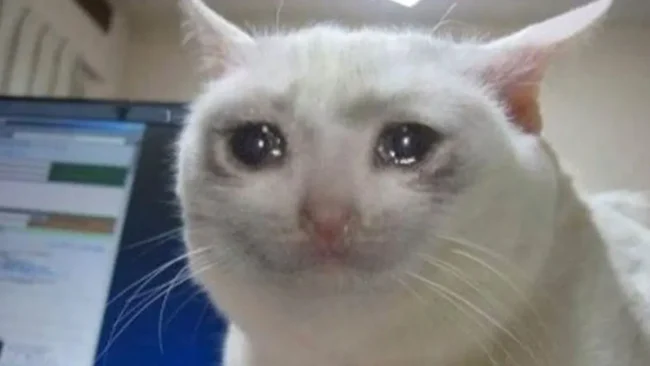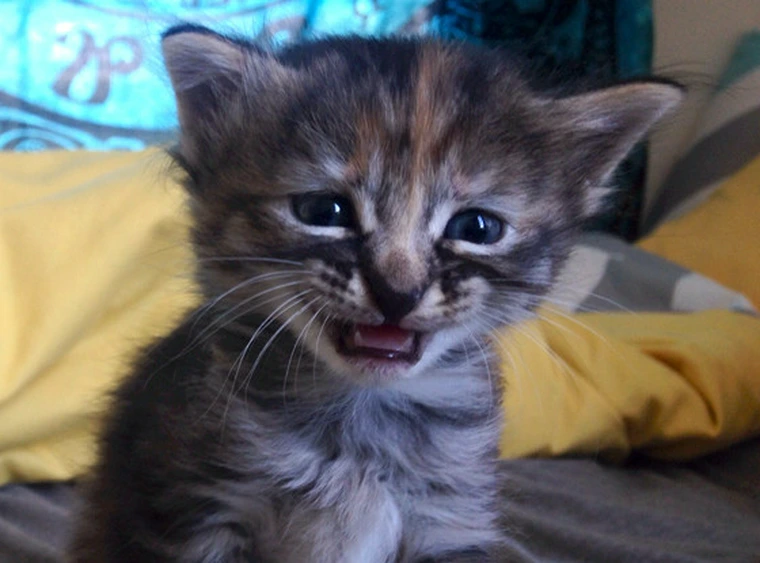The internet has gifted the world with countless memes—funny, absurd, and sometimes deeply relatable images and videos shared across social platforms
The internet has gifted the world with countless memes—funny, absurd, and sometimes deeply relatable images and videos shared across social platforms. Among these, one meme stands out for its unique combination of humor and emotional vulnerability: the crying cat meme. Featuring a cat with watery, sorrowful eyes, this meme has become an internet classic, symbolizing everything from playful sadness to genuine frustration.
In this article, we dive deep into the history, cultural significance, psychological appeal, and the many ways people use the crying cat meme to communicate their feelings online. Whether you’re a meme enthusiast or just curious about why a sad-looking cat resonates with millions, this exploration covers it all.
Must visit: primedomainhub

The Birth of the Crying Cat Meme: From Feline Photo to Internet Icon
The story of the crying cat meme begins with the internet’s long-standing love affair with cats. Cats have been central figures in online humor since the early 2000s, thanks to their expressive faces and quirky behavior. However, the crying cat meme stands apart because it captures an emotion rarely attributed to animals in memes: sadness.
The original crying cat photo depicts a white-and-gray feline with eyes that appear moist or teary, giving the impression of crying. This expression struck a chord because it combined the cute innocence of a cat with a very human emotion—sadness or despair. Some versions of the meme amplify this expression by digitally adding tears or enhancing the eyes to make the emotion even more striking.
Though pinpointing the exact origin of the meme is difficult—like many internet phenomena, it emerged spontaneously in social media groups, forums, and meme pages—it gained rapid popularity in the early 2010s. From there, it spread to platforms like Twitter, Reddit, Instagram, and Discord, becoming a go-to image for expressing emotional moments.
What Makes the Crying Cat Meme So Relatable?
Several psychological and cultural factors explain why the crying cat meme resonates with so many people:
1. Shared Human Experiences
The emotions conveyed by the crying cat—sadness, disappointment, vulnerability—are universal. Everyone has moments when they feel overwhelmed, and this meme provides a way to express those feelings humorously and without embarrassment.
2. Anthropomorphism and Emotional Connection
Humans often attribute emotions to animals based on their facial expressions. The crying cat looks like it’s genuinely feeling sorrow, making it easier for people to project their own feelings onto it. This emotional anthropomorphism strengthens the bond between the meme and its audience.
3. Humor as an Emotional Release
Humor helps people cope with negative emotions. The crying cat meme blends sadness with irony—often people use it to exaggerate minor misfortunes, making light of their troubles. This combination of humor and sadness creates a unique emotional outlet.
4. Simplicity and Versatility
The meme’s simple yet expressive image makes it easy to pair with countless captions and scenarios. It fits everything from mild disappointments (“When your food order is late”) to deeper, more introspective moments (“Trying to hold back tears at the end of a tough day”).
Popular Uses and Variations of the Crying Cat Meme
Over time, the crying cat meme has developed many creative variations and has been adapted to fit diverse online conversations. Some of the most common ways the meme is used include:
- Self-deprecating humor: People share the crying cat meme to humorously acknowledge their own flaws or mistakes.
- Expressing empathy: The meme is used to show solidarity with friends or followers going through tough times.
- Irony and exaggeration: Minor frustrations or awkward situations get amplified by pairing them with the crying cat, making the reaction funnier.
- Reaction image: Instead of words, people use the meme to respond to posts or comments that evoke sympathy or mild sadness.
There are also many artistic reinterpretations—animated versions where tears stream down the cat’s face, photoshopped images placing the crying cat in different scenarios, and even memes combining the crying cat with other popular meme characters to create new hybrid jokes.
The Cultural Impact of the Crying Cat Meme
The crying cat meme has transcended its origins as just another funny picture. It is now part of a larger cultural conversation about how we express emotions online. In a digital age where facial expressions and tone are often missing, memes like the crying cat fill that emotional gap.
It represents a shift in how vulnerability is shared publicly—memes allow people to express sadness, disappointment, or emotional overload with humor, lowering the barriers around these feelings. This phenomenon is particularly important for younger generations who may find traditional emotional communication challenging or stigmatized.
Additionally, the crying cat meme has appeared in merchandise, fan art, and social media challenges, proving its staying power beyond simple internet humor.
Psychological Insights: Why We Use the Crying Cat Meme
Understanding why people gravitate toward the crying cat meme requires looking at the psychological functions memes serve:
- Emotional validation: Sharing a meme that reflects your feelings can make you feel understood and less isolated.
- Safe vulnerability: The humorous context allows people to express sadness or frustration without feeling judged.
- Social bonding: Using and sharing memes creates a sense of community and belonging around shared emotional experiences.
- Stress relief: Laughing or smiling at an ironic or exaggerated representation of sadness can reduce stress and improve mood.
These functions make the crying cat meme not just a joke but an important part of how people emotionally navigate their online lives.
How to Use the Crying Cat Meme Effectively
If you want to incorporate the crying cat meme into your digital conversations, here are some tips:
- Be context-aware: Use it in informal settings or among friends who understand meme culture.
- Pair with fitting captions: A well-written caption makes the meme more relatable and impactful.
- Don’t overuse: Like all memes, too much repetition can lessen the humor and emotional effect.
- Use to lighten heavy topics: The meme is great for injecting humor into stressful or disappointing situations.
- Combine with other memes or formats: Creative mixes can freshen up the meme and keep it interesting.
Examples of Crying Cat Meme Captions
- “When you realize your favorite TV show got canceled.”
- “Me, pretending everything’s fine but secretly crying inside.”
- “That feeling when you drop your phone and it doesn’t break.”
- “When the group chat leaves you on read.”
- “Trying to adult but it’s just not working today.”
These captions reflect a wide range of everyday emotions, showing the meme’s broad appeal.
Frequently Asked Questions (FAQs)
Q1: What is the crying cat meme?
The crying cat meme is an image of a cat with teary or watery eyes used to humorously express feelings of sadness, disappointment, or emotional overwhelm online.
Q2: When did the crying cat meme become popular?
It started gaining widespread recognition in the early 2010s, though the exact origin is unclear. It emerged from the broader trend of cat-related memes on social media.
Q3: Why do people relate to the crying cat meme?
Because it visually expresses common human emotions in a cute and humorous way, making it easy for users to project their feelings onto the image.
Q4: Can the crying cat meme be used seriously?
While mostly humorous, it can sometimes be used in semi-serious or empathetic ways, especially to express mild sadness or emotional vulnerability online.
Q5: Are there different versions of the crying cat meme?
Yes. There are many variations, including photoshopped versions with more tears, animated GIFs, and combinations with other memes.
Q6: Why do cats feature so much in memes?
Cats’ expressive faces, quirky behavior, and widespread popularity as pets make them ideal subjects for memes that are funny, relatable, or emotionally resonant.
Q7: How can I make my own crying cat meme?
Find or create an image of a cat with a sad or teary expression, then add a relatable caption using meme generator tools or image editing apps.
Q8: Will the crying cat meme stay popular?
Given its emotional versatility and ongoing appeal, it’s likely to remain a beloved meme in internet culture for years to come.
Conclusion
The crying cat meme is a perfect example of how a simple image can capture complex human emotions and bring people together through humor and empathy. Its mix of sadness and irony allows people to express vulnerability in a lighthearted, relatable way, bridging gaps in digital communication.
As internet culture continues to evolve, memes like the crying cat prove that even a single feline photo can become a powerful cultural symbol—one that brings laughter, connection, and comfort to millions around the world.

COMMENTS